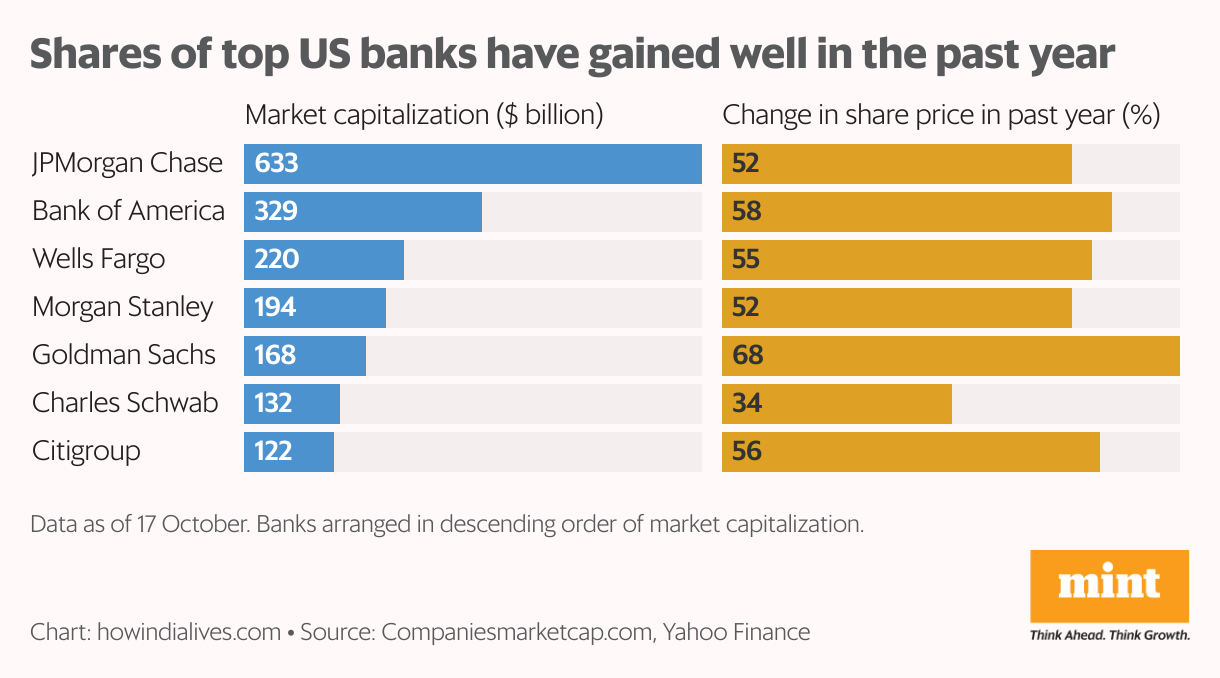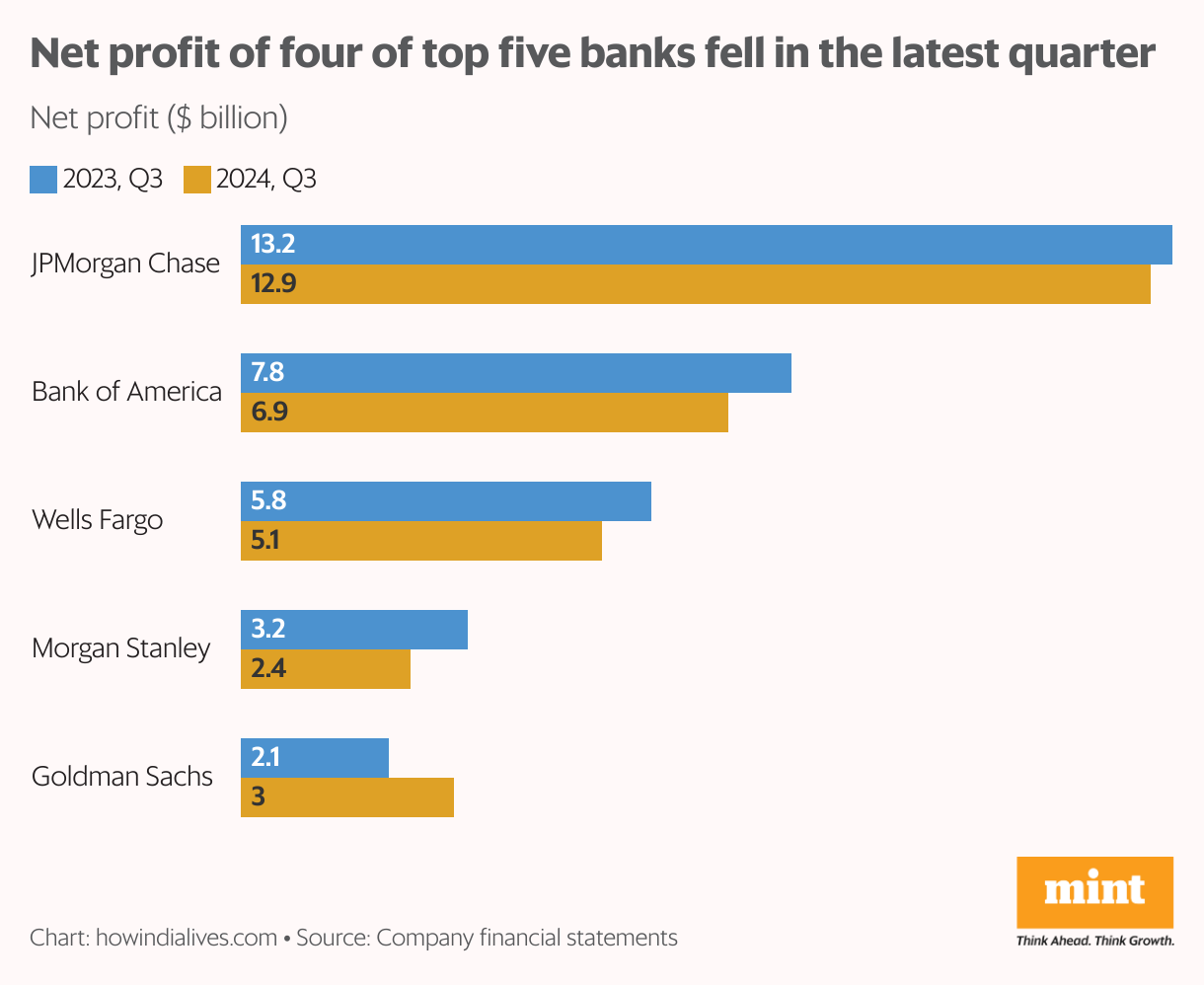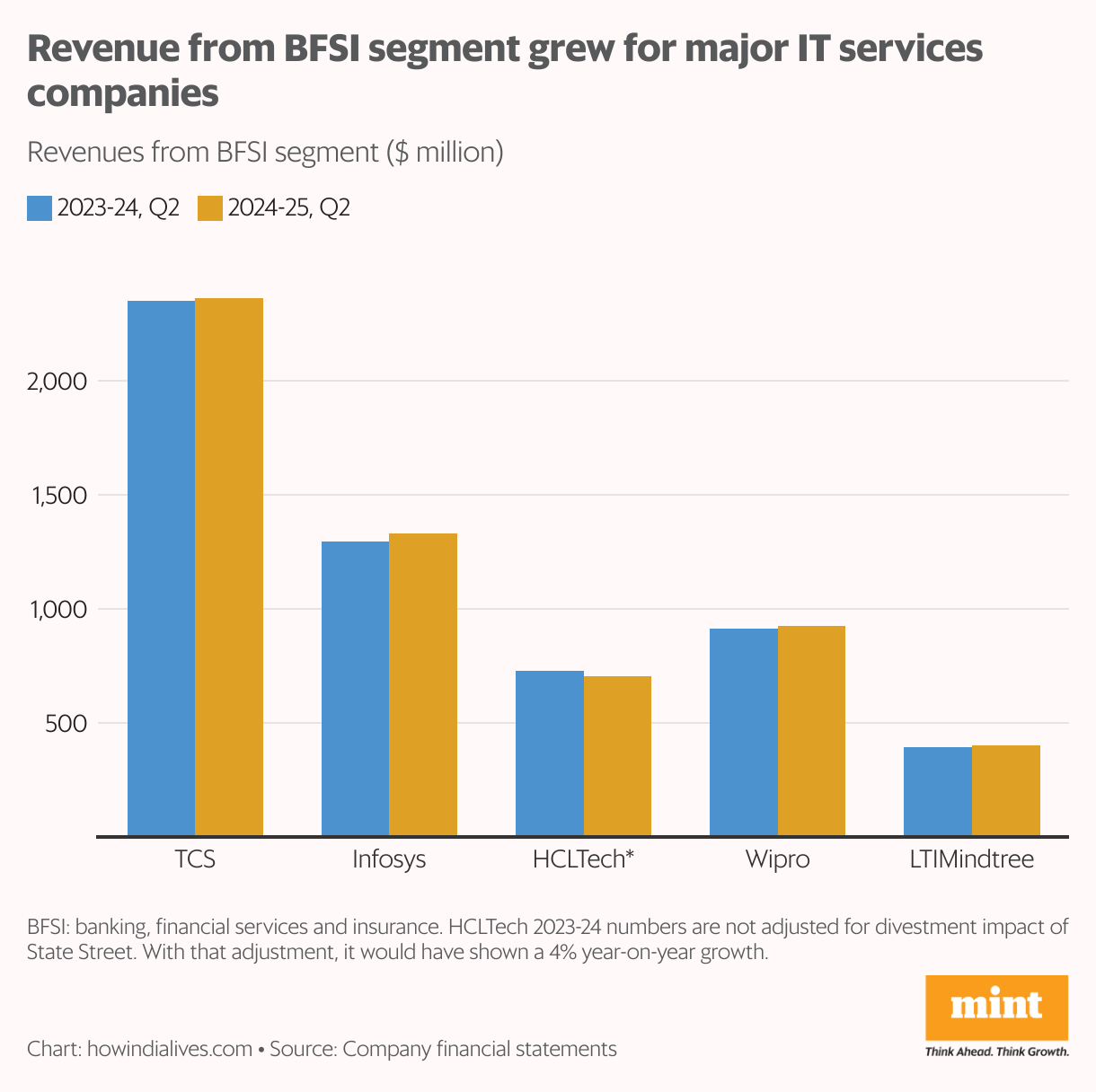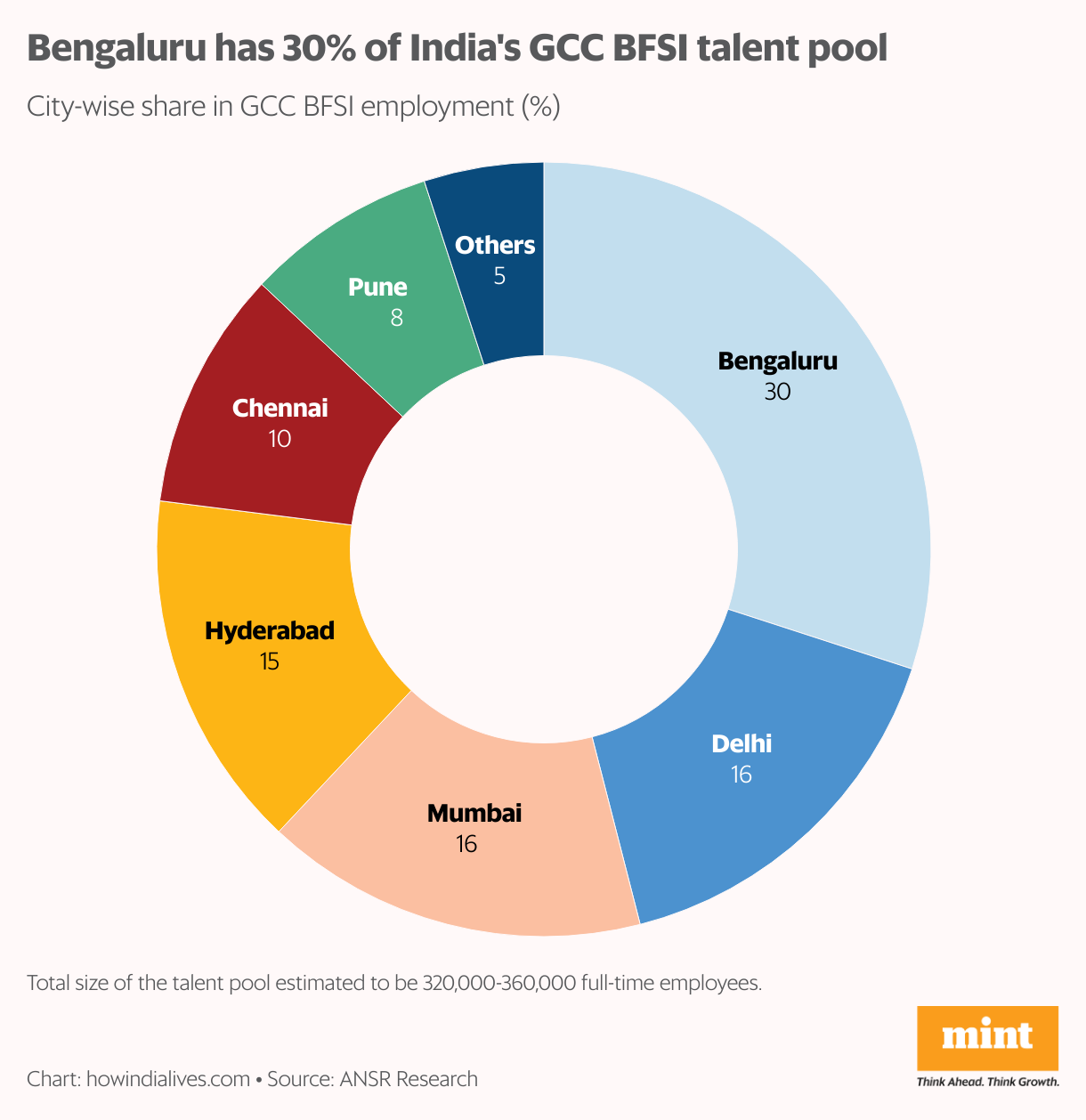




In Short:
In late 2023, US banks began recovering from a crisis, benefiting Indian IT firms like TCS and Infosys, which saw rising revenues from the banking sector. Major banks reported increased profits despite some challenges. Investments in IT by banks are expected to grow, especially in AI. However, Indian IT companies face competition from global firms in this expanding market.
Positive Shifts in the US Banking Sector and Its Impact on Indian IT
NEW DELHI: A year ago, the US banking landscape was grappling with the fallout from the Silicon Valley Bank collapse. Thankfully, by 2023, the sector began to rebound, and fears of a financial meltdown eased. Major banks reported impressive profit surges, but this optimism wasn’t quite mirrored in the earnings of Indian information technology (IT) giants. The reason? Many banks were still holding back, adopting a cautious wait-and-see approach.
From Recovery to Growth
Fast forward to today, and the situation couldn’t be more different. US banks have moved past their uncertainty and are increasingly collaborating with Indian IT service providers. One of the key indicators of this revitalization is the rise in share prices. The Dow Jones US Bank Index has soared by about 51% over the past year, outpacing a 26% increase in the broader Dow Jones Index. The share prices of the top five banks—JPMorgan Chase, Bank of America, Wells Fargo, Morgan Stanley, and Goldman Sachs—have skyrocketed, boasting gains between 52% and 68%.
Interestingly, this upward trend in stock prices has persisted even after the latest quarterly earnings reports. All five banks, except for Goldman Sachs, reported a year-on-year profit decline, but analysts were pleasantly surprised by their earnings, which surpassed expectations that anticipated worse results due to reduced interest income and increased provisions for bad loans. Though challenges remain, the outlook for the banking sector appears optimistic, which is promising news for Indian IT firms.
The BFSI Breakthrough
Four out of the top five Indian IT service companies—Tata Consultancy Services (TCS), Infosys, Wipro, and LTIMindtree—have reported increased revenues from the Banking, Financial Services, and Insurance (BFSI) sector in their September quarter announcements. Notably, HCL Technologies reported a slight decline in their BFSI revenues after its subsidiary, HCL Investments UK, divested a stake in State Street earlier this year. Adjusting for this change, HCL’s BFSI revenues saw a year-on-year growth of about 4%, according to a report from ICICI Securities.
While some of this growth stems from efforts to optimize costs, the primary driver has been increased discretionary spending. In an earnings call, TCS CEO K. Krithivasan noted, “Financial institutions in the US are eager to maintain growth momentum following the Federal Reserve’s first rate cut in four years.” Despite this positive shift, both TCS and Infosys indicated that they are not witnessing any large-scale transformational projects yet.
The GCC Dynamics
Earlier this year, research and advisory firm Gartner predicted that global IT spending in the BFSI sector would grow by 8.7% to reach $735.6 billion in 2024, with a further increase to $1 trillion by 2028. While Indian IT services can expect to benefit from this growth, a significant portion of the spending is allocated to creating global capability centers (GCCs)—essentially in-house tech units within businesses.
With its rich IT talent pool, India is becoming a hub for GCC investments from major banks. For instance, JPMorgan employs over 50,000 professionals in India, while Bank of America and American Express each maintain a workforce of over 20,000, according to ANSR Research. These GCCs deliver high-value services like process automation, risk modeling, and cybersecurity. Although Indian IT firms face stiff competition from GCCs for talent, this dynamic could ultimately expand the overall talent pool, especially as these centers continue to cluster in traditional IT hotspots like Bengaluru, Delhi, Mumbai, and Hyderabad, which account for a significant share of BFSI GCC employees.
A Competitive Landscape
Banks have long been major investors in technology. For example, JPMorgan is anticipated to allocate a whopping $17 billion for technology in 2024, following a precedent of $15 billion in 2023. Similarly, Bank of America budgets around $12 billion each year for technology initiatives, including carving out $3.8 billion for new technology endeavors in 2024, with a spotlight on artificial intelligence tools—a clear indicator of the electrifying shift as businesses race to embrace generative AI.
According to Gartner, around 30% of the total technology spending across industries funnels into IT services. Indian IT firms are vying for a slice of this lucrative market share. With a noticeable shift toward AI technologies, these companies find themselves in a fierce competition against prestigious global firms like IBM and Accenture. In fact, Accenture reported an impressive $1 billion in generative AI bookings for the quarter ending August, totaling $3 billion for the fiscal year 2023-24. As banks ramp up their investments in transformative projects, their AI capabilities will be crucial.
For more insights, visit www.howindialives.com, a comprehensive database and search engine for public data.
Thank you for reading!





